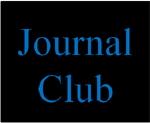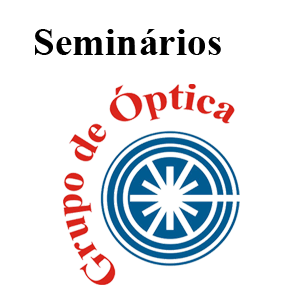Journal club: “All electron topological insulator in InAs double wells”
 Topological Insulators (TI) were initially theoretically predicted in graphene and in inverted band-gap HgTe-based quantum wells. A year later, in 2007, the quantum spin hall effect (QSHE) was observed experimentally in HgTe quantum wells. More recently a QSHE system based on InAs/InSb electron/hole double quantum wells was proposed, and subsequently observed experimentally. Although much progress has been made in these systems, clear observation of edge state transport is still lacking, due to background bulk conductance.
Topological Insulators (TI) were initially theoretically predicted in graphene and in inverted band-gap HgTe-based quantum wells. A year later, in 2007, the quantum spin hall effect (QSHE) was observed experimentally in HgTe quantum wells. More recently a QSHE system based on InAs/InSb electron/hole double quantum wells was proposed, and subsequently observed experimentally. Although much progress has been made in these systems, clear observation of edge state transport is still lacking, due to background bulk conductance.
Here we show that electrons in ordinary III-V semiconductor double wells with an in-plane modulating periodic potential and spin-orbit interaction are tunable TIs. The essential TI ingredients, namely, band inversion and the opening of an overall bulk gap in the spectrum arise, respectively, from (i) the combined effect of the double well even-odd state splitting together with the superlattice potential and (ii) the interband Rashba spin-orbit coupling. We will introduce the origins of the interband spin-orbit coupling and using the k.p-like approach we will derive an effective Bernevig-Hughes-Zhang model. In addition to the analytical work we perform numerical calculations of the bands and explicitly verify the bulk-edge correspondence by considering a strip configuration and determining not only the bulk bands but also the edge states and their Dirac-like spectrum in the topological phase. Finally we will consider the effects of the intraband spin-orbit coupling, and the breaking of inversion symmetry due to the periodic superlattice potential, and discuss possible experimental implementation.




 Spinless bosons in optical lattices reveal a generic quantum phase transition once the depth of the potential wells is tuned. When the on-site interaction energy is small compared to the hopping energy, the ground state is superfluid, as the bosons are delocalized and phase coherent over the whole lattice. In the opposite limit, where the on-site interaction energy dominates over the hopping energy, the ground state is a Mott insulator, as each boson is trapped in one of the respective potential minima.
Spinless bosons in optical lattices reveal a generic quantum phase transition once the depth of the potential wells is tuned. When the on-site interaction energy is small compared to the hopping energy, the ground state is superfluid, as the bosons are delocalized and phase coherent over the whole lattice. In the opposite limit, where the on-site interaction energy dominates over the hopping energy, the ground state is a Mott insulator, as each boson is trapped in one of the respective potential minima. 1. Grant MAA, Kazamia E, Cicuta P, Smith AG (2014) Direct exchange of vitamin B12 is demonstrated by modelling the growth dynamics of algal-bacterial coculture. ISME J doi: 10.1038/ismej.2014.9.
1. Grant MAA, Kazamia E, Cicuta P, Smith AG (2014) Direct exchange of vitamin B12 is demonstrated by modelling the growth dynamics of algal-bacterial coculture. ISME J doi: 10.1038/ismej.2014.9. A análise de espectros e tempos de vida de fluorescência em tecidos biológicos vem sendo apresentada como uma técnica com grande potencial para a caracterização tecidual com finalidade diagnóstica. Além de medidas rápidas e não-invasivas, ela permite uma avaliação do tecido in situ, sem a necessidade de remoção e processamento da amostra biológica. No caso de lesões cutâneas, podem haver lesões benignas com aspectos clínicos semelhantes aos de malignas, o que torna o diagnóstico clínico mais complexo. O prognóstico do paciente, assim como a modalidade terapêutica, depende do tipo histológico e da evolução da lesão. Nesse contexto, técnicas auxiliares de diagnóstico são de grande relevância para melhorar o planejamento e o sucesso do tratamento. Nesta primeira etapa do projeto, um dos primeiros sistemas portáteis de espectroscopia de tempo de vida de fluorescência do mundo foi desenvolvido e caracterizado. Esse sistema foi adaptado de um sistema comercial de bancada para uma maleta metálica, de modo a facilitar o transporte e viabilizar medidas clínicas. Também serão apresentados alguns dos resultados preliminares de diferenciação entre áreas da pele expostas e não-expostas ao sol em voluntários jovens, nos quais não se esperava uma grande diferenciação.
A análise de espectros e tempos de vida de fluorescência em tecidos biológicos vem sendo apresentada como uma técnica com grande potencial para a caracterização tecidual com finalidade diagnóstica. Além de medidas rápidas e não-invasivas, ela permite uma avaliação do tecido in situ, sem a necessidade de remoção e processamento da amostra biológica. No caso de lesões cutâneas, podem haver lesões benignas com aspectos clínicos semelhantes aos de malignas, o que torna o diagnóstico clínico mais complexo. O prognóstico do paciente, assim como a modalidade terapêutica, depende do tipo histológico e da evolução da lesão. Nesse contexto, técnicas auxiliares de diagnóstico são de grande relevância para melhorar o planejamento e o sucesso do tratamento. Nesta primeira etapa do projeto, um dos primeiros sistemas portáteis de espectroscopia de tempo de vida de fluorescência do mundo foi desenvolvido e caracterizado. Esse sistema foi adaptado de um sistema comercial de bancada para uma maleta metálica, de modo a facilitar o transporte e viabilizar medidas clínicas. Também serão apresentados alguns dos resultados preliminares de diferenciação entre áreas da pele expostas e não-expostas ao sol em voluntários jovens, nos quais não se esperava uma grande diferenciação. Em 2015, celebramos o centenário da Teoria da Relatividade Geral (TRG), proposta por Albert Einstein. Após uma breve introdução sobre a TRG, discutiremos uma de suas mais impressionantes implicações: os Buracos Negros. Em seguida, destacaremos resultados recentes sobre a física de Buracos Negros, com ênfase na absorção e no espalhamento de diferentes campos (escalar, eletromagnético e gravitacional) nestas geometrias. Também apresentaremos alguns análogos acústicos de Buracos Negros.
Em 2015, celebramos o centenário da Teoria da Relatividade Geral (TRG), proposta por Albert Einstein. Após uma breve introdução sobre a TRG, discutiremos uma de suas mais impressionantes implicações: os Buracos Negros. Em seguida, destacaremos resultados recentes sobre a física de Buracos Negros, com ênfase na absorção e no espalhamento de diferentes campos (escalar, eletromagnético e gravitacional) nestas geometrias. Também apresentaremos alguns análogos acústicos de Buracos Negros.